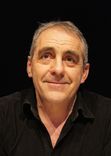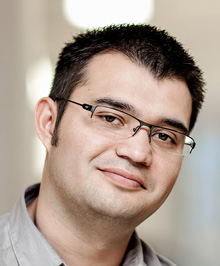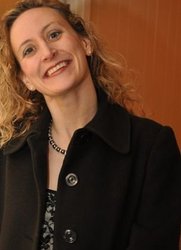We are pleased to announce the following keynote speakers at IGS 2015:

| Prof. Réjean Plamondon, IGS 2015, Honorary Chair
Director, Scribens Lab
Biomedical Science and Technologies Research Centre (GRSTB), member Professor,
Department of Electrical Engineering, EPTM
Email : rejean.plamondon @ polymtl.ca |
|
Title: Personal Digital Bodyguards for e-Security, e-Health and e-Learning
Abstract : In the forthcoming years, the ubiquity of hand-held tablets and cell phones, along with their increased computing power and ergonomic data capture performances, will make it possible to convert these devices into Personal Digital Bodyguards (PDBs). PDBs will protect people’s sensitive data with signature verification, provide equipment use security with writer authentication, handwritten CAPTCHAs (e-security) and perform word spotting and recognition to monitor user fine motor control, which can detect stress, aging and health problems (e-health). In the hands of children, these tools will turn into toys helping them to learn and master their fine motricity and become better writers and students (e-learning).
At Scribens laboratory, we have been working on some of these potential applications for many years, directly or indirectly guided by the Lognormality Principle. In its simplest form, this fundamental premise states that the lognormality of the neuromuscular impulse responses is a basic global feature reflecting the behaviour of individuals who are in perfect control of their movements. As a corollary, if we specifically focus on the basic mathematical convergence toward lognormality, motor control learning in young children can be interpreted as a migration toward lognormality. Then, for the greater part of their lives, human adults take advantage of lognormality to control their movements. Finally, as aging and health issues increase, a progressive departure from lognormality is anticipated.
From a practical point of view, the concept of lognormality provides a common thread, an integrative standpoint to track the problems of signature verification, writer identification, handwriting generation, recognition and learning. This keynote presentation will point out how the resulting methodologies could be of great help to meet the PDB challenge. It will highlight which pathways we have decided to follow to reach this goal, where we stand now and what should be our next moves. Throughout the talk, the worldwide collective efforts that we have initiated to track some specific problems will be pointed out, emphasizing the specific expertise of our national and international partners.
Biography: Réjean Plamondon received a B.Sc. degree in Physics, and M.Sc.A. and Ph.D. degrees in Electrical Engineering from Université Laval, Québec, P.Q., Canada in 1973, 1975 and 1978 respectively. In 1978, he joined the faculty of the École Polytechnique, Université de Montréal, Montréal, P.Q., Canada, and became a Full Professor in 1991. He has been Head of the Department of Electrical and Computer Engineering from 1996 to 1998 and President of École Polytechnique from 1998 to 2002. He is now Head of Laboratoire Scribens at this institution.
Along the various stages of his career, Professor Plamondon have been working in Pattern Recognition particularly on the study of emerging phenomena and behavior in biological and physical systems exploiting various convergence theorems.
Over the last thirty years, Professor Plamondon has been involved in many pattern recognition projects, particularly in the field of on-line and off-line handwriting analysis and processing. He has proposed many original solutions, based on exhaustive studies of human movement generation and perception, to problems related to the design of automatic systems for signature verification and handwriting recognition, as well as interactive electronic pen pads to help children learning handwriting and powerful methods for analyzing and interpreting neuromuscular signals. His main contribution has been the development of a kinematic theory of rapid human movements which can take into account, with the help of a unique set of lognormal functions, the major psychophysical phenomena reported in studies dealing with rapid movements. The theory has been found successful in describing the basic kinematic properties of velocity profiles as observed in finger, hand, arm, head and eye movements. Professor Plamondon has studied and analyzed these bio signals extensively in order to develop creative and powerful methods and systems in various domains of engineering.
In the last twelve years, he has also been deeply involved in the generalization of his kinematic theory to the study of emerging phenomena in physical systems, mainly focussing on the unification of general relativity and quantum mechanics. He published, in June 2012, “Patterns in Physics: Toward a Unifying Theory,”, a book on this topic, and recently summarized the conducting thread used all along his research career in “Strokes against Stroke, Strokes for Strides, Pattern Recognition,vol.47, No.3, pp. 929-944.
Full member of the Canadian Association of Physicists, the Ordre des Ingénieurs du Québec, the Union nationale des écrivains du Québec, Dr Plamondon is an also active member of several international societies. He is a lifelong Fellow of the Netherlands Institute for Advanced Study in the Humanities and Social Sciences (NIAS; 1989), of the International Association for Pattern Recognition (IAPR; 1994) and of the Institute of Electrical and Electronics Engineers (IEEE; 2000). From 1990 to 1997, he was the President of the Canadian Image Processing and Pattern Recognition Society and the Canadian representative on the board of Governors of IAPR. He has been the President of the International Graphonomics Society (IGS) from 1995 to 2007. He has been involved in the planning and organization of numerous international conferences and workshops and has worked with scientists from many countries all over the world. He is the author or co-author of more than 300 publications and owner of four patents. He has edited or co-edited five books and several Special Issues of scientific journals. He has also published a children book, a short story and three collections of poems. He recently received the IAPR/ICDAR 2013 outstanding achievement award “for theoretical contributions to the understanding of human movement and its applications to signature verification, handwriting recognition, instruction, and health assessment, and for promoting on-line document processing in numerous multidisciplinary fields.”
 SONY DSC
| Jean-Luc Velay
Cognitive Neurosciences Laboratory member,
CNRS Researcher
Aix-Marseille University
Email : jean-luc.velay @ univ-amu.fr |
|
Title: Translating graphical movements into sounds and music to facilitate handwriting rehabilitation
Abstract: The mastering of handwriting is so essential in our society that it is important to try to find new methods for facilitating its learning and rehabilitation. Up to now, the quality of handwriting was evaluated from the visual inspection of its legibility and not from the movement that generates the trace, although the ability to control the graphic movements clearly impacts on the quality of the writing. New technologies improve existing techniques or enable new methods to supply the therapist with new diagnostic tools and the writer with real-time computer-assisted feedback. In particular, sounds can be used to inform about the correctness of an ongoing movement, without directly interfering with the visual and proprioceptive feedback. Furthermore, the dynamic features of sounds make them particularly appropriate means of accessing the spatiotemporal characteristics of movements. Finally, because of their playful characteristics, sounds are potentially effective for motivating children in particular need of such assistance. We will present experimental data suggesting that transforming kinematic variables into sounds might be a relevant tool allowing a therapist to complete the visual assessment of the written trace by an auditory control of the handwriting movement quality. Furthermore, both adults with a proprioceptive loss and dysgraphic children are able to write faster and with more fluent movements with the aid of auditory feedback. We propose that sounds and music may be used as a palliative way to assist handwriting movement learning and rehabilitation.
Biography : I received a Ph.D. degree in Neurosciences from Aix-Marseille University, France in 1984. After a post-doctoral training under the supervision of P. Viviani in Milan (Italy) where I studied visual perception and oculomotor control, I was recruited as permanent senior researcher by the French Centre for Scientific Research (CNRS) in 1986. I am currently in the Cognitive Neurosciences Laboratory in Marseille.
During several years, I have been studying the role of arm and eye proprioception both in motor control and space perception in Human. I became interested in the control of a particular movement serving language, namely handwriting. Using fMRI, I try to understand the cognitive and brain processes involved in handwriting production and perception, and the interconnections between reading and handwriting. In particular, we have studied the cognitive and cerebral consequences of the increasing moving from handwriting to typing. In addition, I have been working on the handwriting troubles and their links with other learning troubles, as dyslexia and developmental coordination disorders (DCD). An important topic in our team is the relationships between music production and perception and oral and written language: We used music as a means of reducing language troubles in dyslexic children, for instance. By nature, handwriting is an inter-disciplinary subject which led me to create multiple collaborations with Education Sciences, Educational psychology, linguistics, neurologists, forensic sciences… Recently, we were looking for the best strategy to inform poor writers about the quality of their writing movements. Thanks to a collaboration with acousticians, we transformed some kinematic variables into sounds to supply them with a bio-feedback about handwriting. This approach seems promising to help children with dysgraphia to better feel what is not appropriate in their movements.
I co-hosted the IGS2009 Conference in Dijon (France) together with A. Vinter.

| Max Ortiz Catalan
Chalmers University of Technology
Email : maxo @ chalmers.se |
|
Title: Skeletal attachment and neural control of artificial limbs
Abstract: Ever since the invention of implantable devices, a reliable and long-term stable communication with the outside of the body has been a major problem. In the case of prosthetic limbs, this has prevented the utilization of implanted neuromuscular interfaces for a direct and intuitive neural control. Our group at Chalmers University of Technology, the Centre of Orthopaedic Osseointegration at Sahlgrenska University Hospital (COO-SUH), and Integrum AB, has developed a bidirectional interface into the human body, namely the Osseointegrated Human-Machine Gateway (OHMG). The OHMG allows for the long-term study of bioelectric signals directly recorded from nerves and muscles of patients with missing limbs, as well as to chronically elicit tactile sensory feedback via neurostimulation. More importantly, results from the first patient have shown to dramatically increase prosthetic functionality, thus reducing disability and improving quality of life (video 1, 2). This patient is the first person in the world to have permanently implanted electrodes in nerves and muscles to control a robotic prosthesis at home and work, but more importantly, he has done so for two years without complications, thus demonstrating the feasibility of this novel technology.
This talk will focus on the bidirectional osseointegrated interface, neurostimulation for sensory feedback, and pattern recognition for control (video 3), as well as our latest work on a novel treatment of phantom limb pain using virtual and augmented reality (video 4).
Biography: Dr. Max Ortiz Catalan received his Electronics Engineering degree in 2005 by the ITEMS Campus Toluca, Mexico. He spent one year of his engineering formation at the Université de Technologie de Compiègne, France. He worked 2 years in industrial automation before joining the M.Sc. program in Complex Adaptive System, at Chalmers University of Technology (CTH), Sweden, graduating in 2009. In 2014, he obtained his PhD in Biomedical Engineering from CTH in collaboration with the Centre of Orthopaedic Osseointegration at Sahlgrenska University Hospital (COO-SUH), and Integrum AB, Sweden. During his PhD, he was invited researcher at Neural Rehabilitation Engineering Lab in the Université chatolique de Louvain, Belgium, and Research Engineer at Integrum AB. He is currently Research Scientist at CTH and COO-SUH, as well as R&D Manager at Integrum AB. His research interests include bioelectric signals acquisition electronics (analog and digital); signal processing and artificial intelligence algorithms for pattern recognition and control; neuromuscular interfaces; bone-anchored prostheses and osseointegration; as well as virtual and augmented reality for neuromuscular rehabilitation and the treatment of phantom limb pain.
He has won several academic and industrial awards such as “Leadership and Academic Excellence” by ITESM, Mexico; the “Young Scientist Forum Scholarship” by GöteborgBio, Sweden; the youngest recipient of the “You Can Make a Difference Award” by one of the world’s largest transnational companies; and the “European Youth Award” by the European Council.

| Dr. Tracy Anne Hammond
Director, Sketch Recognition Lab
Associate Professor
Computer Science & Engineering, TAMU
Email: hammond @ tamu.edu |
|
Title: The Personal Nature of Sketching and the Impact of Sketch Recognition Systems
abstract: Drawing is one of our most natural forms of communication. We use it from an early age, and throughout life, it remains an important means of expression. At the Sketch Recognition Lab, we have found enormous potential in enabling computers to understand and act upon this expression, and in this talk, we’ll explore how sketch recognition is already having an impact in many fields today. Because it is so intuitive, educational software using sketch recognition can remove many of the limitations faced by other computer-based learning tools. Mechanix, an educational tool for automatically evaluating trusses and free body diagrams, is built around this principle. Mechanix’s live interaction helps students learn best practices and how to avoid common mistakes from their first experience with a new concept. Other systems like iCanDraw and Persketchtivity use their understanding of students’ drawings to help them learn design principles and improve their skill. Each of these applications relies on a personal interaction with the user to provide them with an enhanced learning experience, but this connection carries information beyond the field of education. In health, recognition algorithms can be applied to user sketches to track their developmental level, sleepiness, or mental health, as SmartStrokes does for patients recovering from strokes. Related to forensics, marks as small as the dotting of an “i” can be used by a computer to identify, with high accuracy, the individual who drew it based on a number of features. Sketch recognition and the algorithms it uses have potential for tremendous impacts on our lives by taking our interactions with technology to the next level.
Biography: Director of the Sketch Recognition Lab and Associate Professor in the Department of Computer Science and Engineering at Texas A&M University, Dr. Hammond is an international leader in activity recognition (focusing on eye, body, and sketch motions), haptics, intelligent fabrics, SmartPhone development, and computer human interaction research. Dr. Hammond ’s publications on the subjects are widely cited and have well over a thousand citations, with Dr. Hammond having an h-index of 18, an h10-index of 26, and four papers with over 100 citations each. Her research has been funded by NSF, DARPA, Google, and many others, totaling over 3.6 million dollars in peer reviewed funding. She holds a PhD in Computer Science and FTO (Finance Technology Option) from MIT, and four degrees from Columbia University: an M.S in Anthropology, an M.S. in Computer Science, a B.A. in Mathematics, and a B.S. in Applied Mathematics. Prior to joining the TAMU CSE faculty Dr. Hammond taught for five years at Columbia University and was a telecom analyst for four years at Goldman Sachs. Dr Hammond is the 2011-2012 recipient of the Charles H. Barclay, Jr. ’45 Faculty Fellow Award. The Barclay Award is given to professors and associate professors who have been nominated for their overall contributions to the Engineering Program through classroom instruction, scholarly activities, and professional service. Dr. Hammond has been featured on the Discovery Channel and other news sources.
|